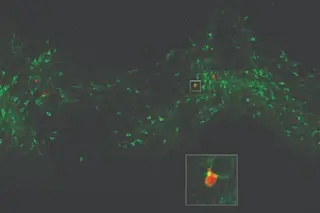It was a commercial that sent many people scrambling for the remote: A brutal montage of depressed dogs and wounded cats looking sadly at the camera while Sarah McLachlan’s song “Angel” played in the background. McLachlan herself later appeared, imploring viewers to help put an end to animal suffering with a donation to the American Society for the Prevention and Cruelty to Animals.
The ad worked. Within a year, the ASPCA raised $30 million, their greatest ever fundraising effort. And the ad demonstrated that people are capable of great empathy for other animals — or, rather, some of them.
Animal suffering can also be easily ignored by humans, which makes empathy a complex topic to study. As scientists continue to learn more about what motivates a person to feel for another animal, their results could have a big impact on conservation centers, animal welfare laws and environmental protection policies.
Empathy ...















